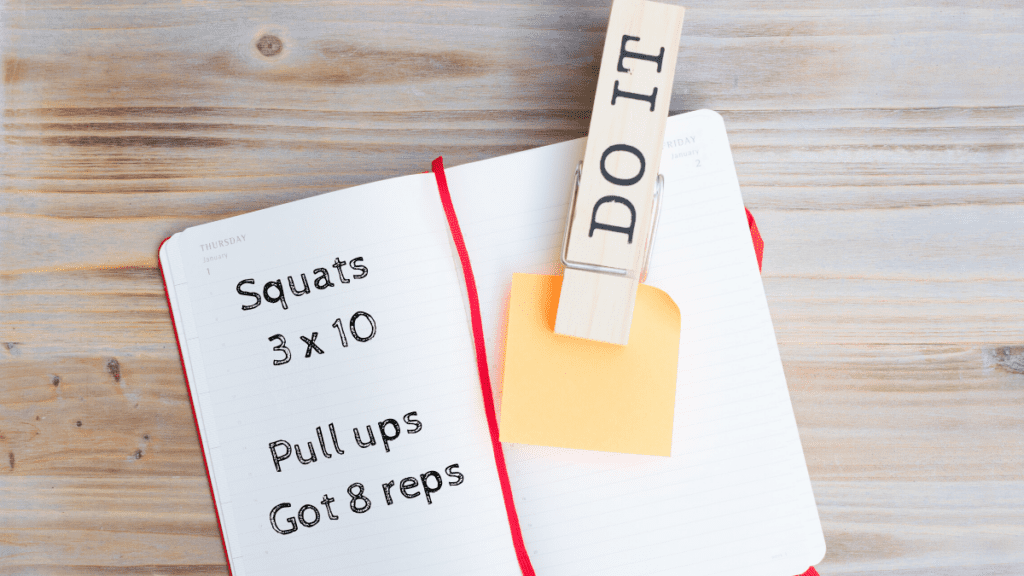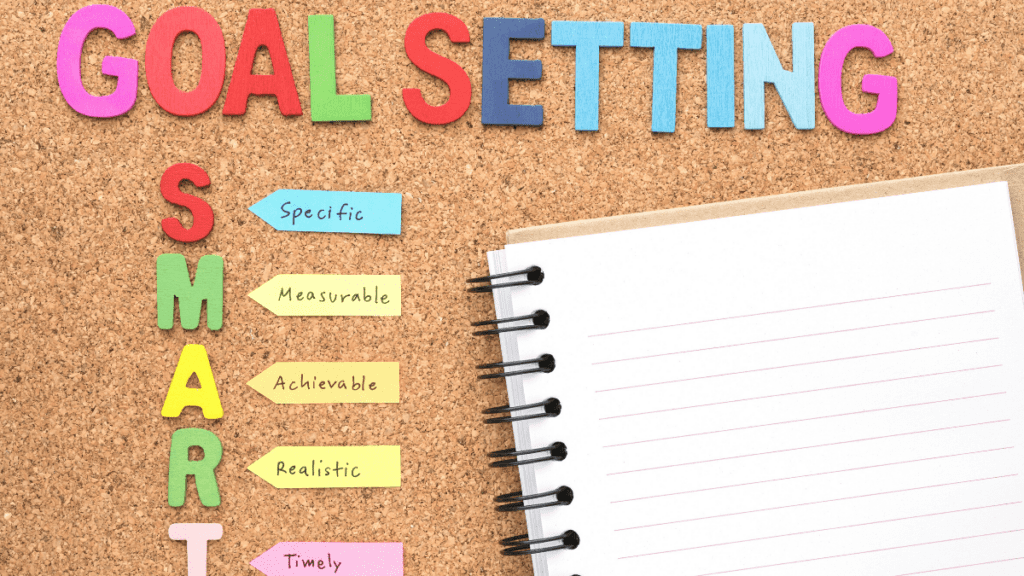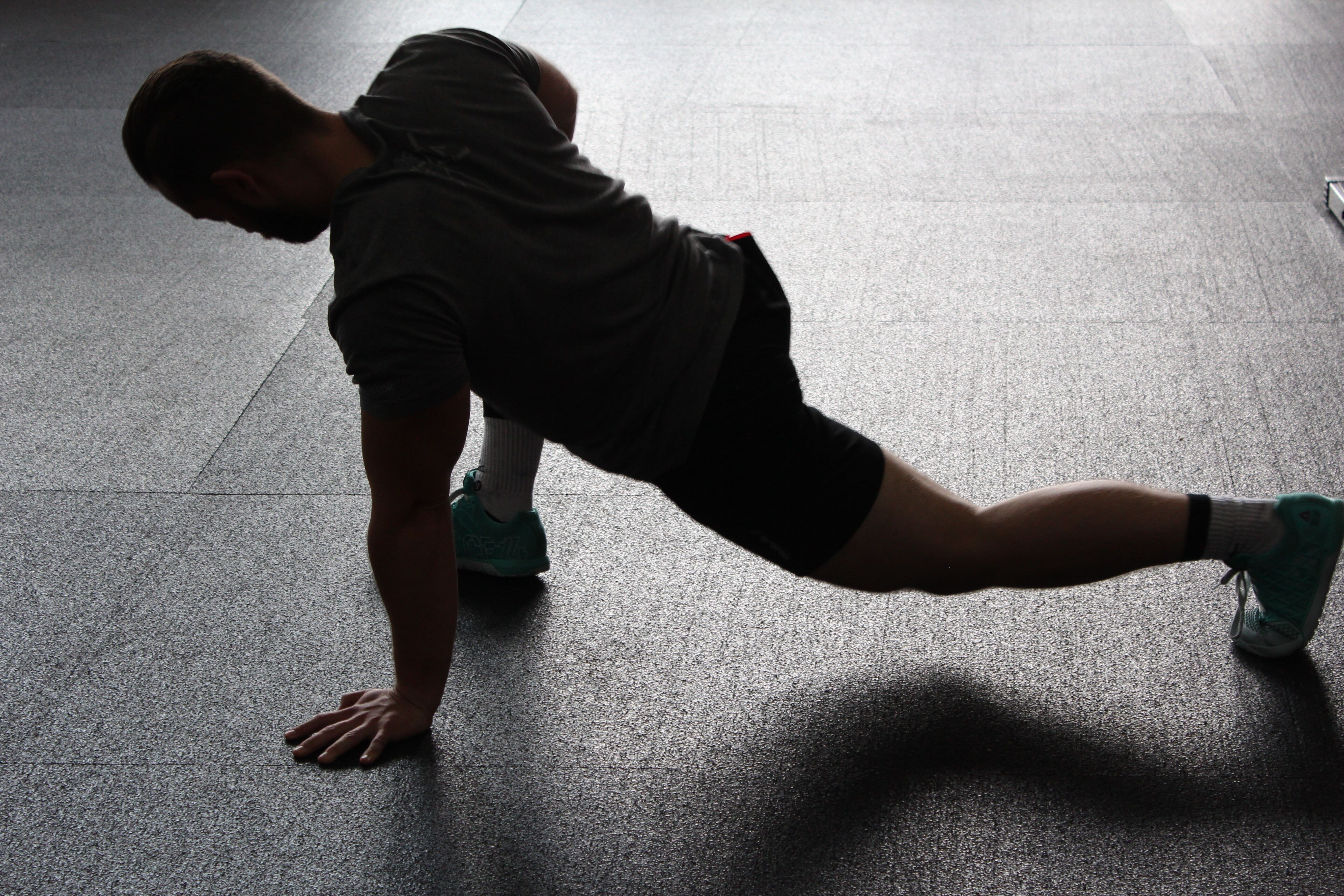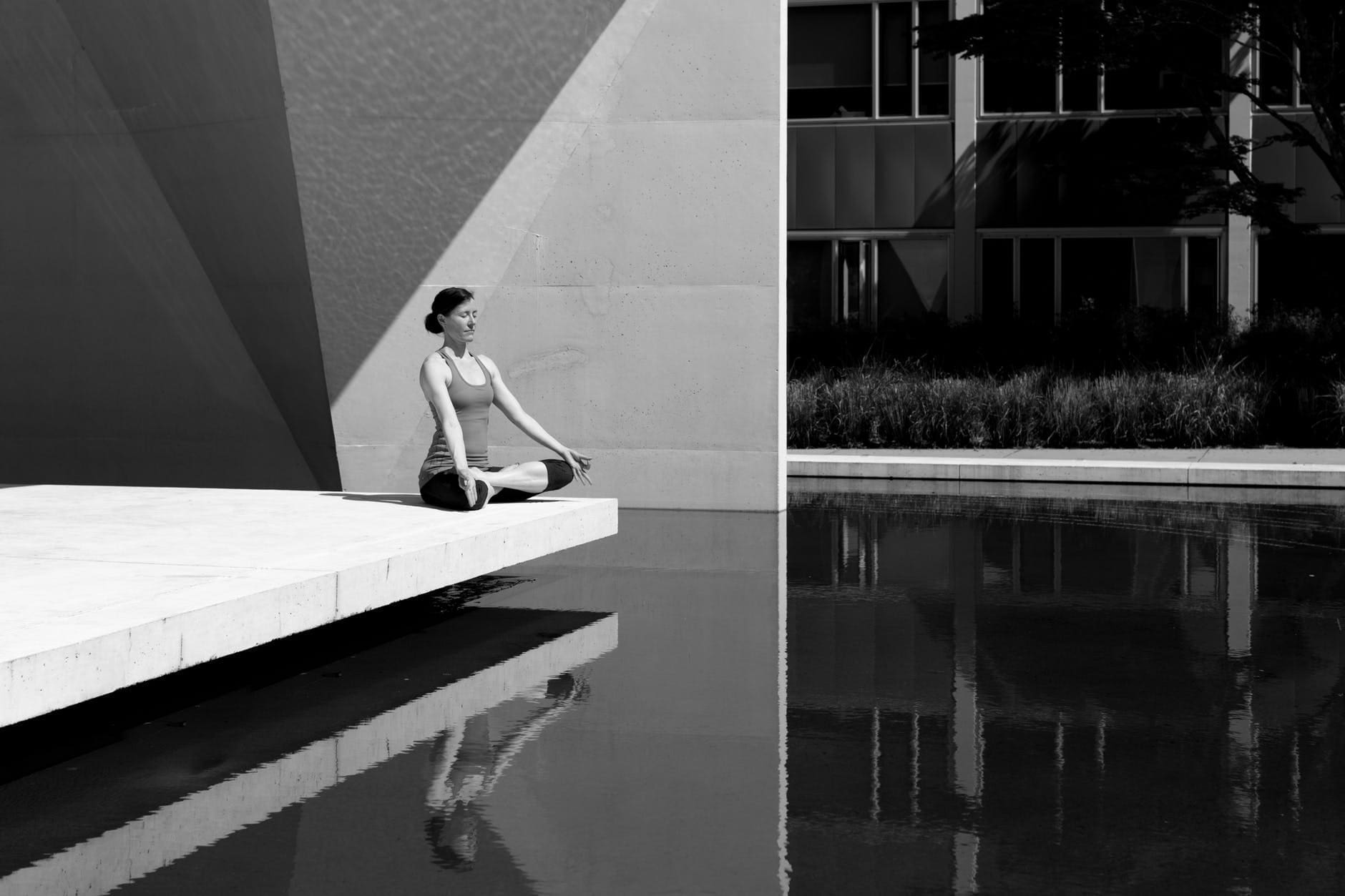These 10 Fitness tips can help take your workout game to the next level. Get stronger, Improve faster, and crush new goals .
Note: This article contains affiliate links to products I believe in and use. They come at no additional cost to you.
Progress = Motivation
It's undeniable that progress is the driving force that keeps us motivated to push ourselves forward.
There's nothing better than seeing hard work result in real changes to our body and our abilities.
It's critical, then, to make sure you're doing the right things to keep progress rolling forward.
Sooner or later, we all reach a point where changes need to be made. We plateau, and many lose motivation or become complacent and just go through the motions, repeating the same routine for months or years with little results to show for it.
Here are 10 things you can do to take your workouts, your fitness and your life to the next level. You might just find something that can restart your motivation and get you moving forward to that best version of yourself, where you belong!
Tip #1: Keep a Workout Journal

Keeping a workout Journal will allow you to:
- Track Progress over time
- See what was working for you in the past when you run into problems in the present
- "Compete" against yourself using past performances in any type of workout
- Analyze exactly what you're doing, and how much you're doing, compared to the results you're getting.
Great coaches and trainers will always have their clients keep a workout journal. Having access to past workouts can be invaluable.
There are plenty of free apps you can use. I use "Day One Journal." It's free and easy to use. It also allows you to place "tags" on all your workouts, so you can easily reference them when you need to.
Advanced
You can dive a lot deeper into this, if you're a more serious athlete.. You could be tracking things like your resting heart rate each morning and/or your heart rate variability. You could also have some specific workout "tests" you can repeat to measure progress.
Tip #2: Use a Heart Rate Monitor

Using a heart rate monitor can change the way you work out completely.
You can be specific about what you're trying to accomplish in your workout by using different heart rate zones for different outcomes.
For example, training for 30 minutes with your heart rate between 110-120 would be a low intensity cardio session, stimulating recovery.
30 minutes with the heart rate between 130-150 would be stimulating cardiac output.. training the heart to pump more blood per beat and enlarging the left ventricle, improving aerobic fitness.
Training for 30 minutes with a HR at 155-170 would be training for aerobic power, and would be a much higher intensity session.
I highly recommend the Polar H10 heart rate monitor. Polar really can't be beat in this department, and this model is both affordable and accurate. It's also full of great features.
Read: How to Lower Your Resting Heart Rate: Specific Methods
Advanced
If you're more advanced, a heart rate monitor can be even more useful. You can track how long it takes your heart rate to recover after intense activity, with the goal of increasing your one minute heart rate recovery over time. You can also keep track of your resting heart rate by testing it first thing in the morning. A low resting heart rate is the surest sign of improving aerobic fitness.

Tip #3: Have a Clear Goal

If you ask people in the gym what their goals are, you'd get all kinds of answers.
From experience as a trainer I can tell you, most people don't really know exactly what they're trying to accomplish. They say things like "I just want to gain muscle and lose weight," or, "I want to get in shape."
These are not clear, definite goals. A goal should be something like; "I want to lose 15lbs in the next 8 weeks," or, "I want to gain 5lbs of muscle and be at 10% body fat by May 1st."
Goals should be: SMART
- Specific - What exactly do you want to accomplish?
- Measurable - Don't just say "lose weight." Say, I'm going to lose 10lbs.
- Achievable - You aren't going to add 100lbs to your bench press in 30 days. Remember, Progress = Motivation.. Set yourself up to achieve small goals that are attainable, and they will add up to big changes.
- Relevant - If you're training for a marathon, your goals should be relevant to that.. too many people have conflicting goals like, I want to get bigger, lose weight, get stronger, get leaner and run faster.
- Timely - Goals should have a time-frame. If you want to add 50lbs to your bench press, say: "I'll add 50lbs to my bench press in 6 months by doing _______."
Have clear goals, and be able to express how you're going to accomplish the goal. If you don't know how, then that is why trainers have jobs, and there is plenty of information out there as well. It's your goal, and your responsibility to go after it!
Tip #4: Use High Intensity Training Carefully
Too many people are obsessed with HIIT workouts. And it's true, HIIT can be a highly effective way to achieve a range of fitness goals. But HIIT training comes at a cost, as it takes considerable energy for your body to recover from a constant beat-down of high intensity effort.
A study by Les Mills Lab concluded that 40 minutes of HIIT training per week was optimal for most people, with added training being detrimental to fitness and performance.
High intensity training, or HIIT, should be utilized no more than twice per week. Even elite athletes rarely go above 3 days per week, and even then it is only for short training cycles.
your bodies simply cannot recover enough to adapt to that much high intensity effort, and so short term gains in performance will soon turn to a massive recovery debt, and your workouts and your well-being will suffer the consequences.
Fitness is best improved by using a variety of different intensities and methods. Keep the HIIT to 1-2 days per week and utilize other methods, low and moderate intensity training on the other days.
You can read my article on the dangers of HIIT right here:
Tip #5: Boost Your Workout Recovery

There are several ways you can help speed boost your workout recovery. I'll list a few here from my article: 10 Ways to Boost Workout Recovery:
- Recovery Workouts: lower intensity workouts to stimulate blood flow and recovery the day after a high intensity workout.
- Compression clothing: Compression can reduce muscle damage and soreness. Check out 2XU Compression Pants if you want real compression.
- Pre Workout Protein and Carbs: Pre workout nutrition is often overlooked and has a big impact on recovery.
Massage/Relaxation
Massages and any other form of deep relaxation can be very beneficial.. as they help nudge the body into a parasympathetic recovery state. Studies have shown that massage can reduce Delayed onset muscle soreness by 30%.
Take care of yourself. Focus as much on recovery as you do on working out and training, and you will reap much greater rewards from your efforts and stay in the game a lot longer.
#6 Switch Up Your Training Every 6-10 Weeks
After 6-10 weeks of focusing on one aspect of your training (strength, endurance, size, etc..) your progress is sure to slow down and eventually come to a halt.
For this reason, smart athletes Periodize their training. This means they place more focus in one area for a period of time (usually 6-8 weeks), and then switch their focus. This allows for constant progress.
This doesn't mean that you completely disregard other areas of fitness. You simply place less emphasis on them so you can focus a little more in another area. If you're going to try to get stronger for 6-8 weeks, you can add an extra day or two of strength training, and do a little less cardio/endurance work during that time.
Periodizing your training will give you the best chance at continuous progress and is the best long term strategy to follow for optimal gains in fitness.
#7 Use The Right Supplements
If you walk into any supplement store, you are bombarded with literally thousands of different supplements all claiming to have incredible results.
It's really important to understand that these supplement companies are not bound by the FDA, and can make all sorts of claims that aren't necessarily true at all.
Keep it simple. There are supplements backed by a ton of research showing they work, and exactly how they work and what they DO.
Once you understand this, all you have to do is choose the right ones to help you with your goals. If your only goal is losing weight, creatine probably isn't going to benefit you, regardless of what the label claims.
Supplements That Actually Work
| Creatine | -Increase Power/Power Endurance -Increase Strength -Increase size -Use for heavy/max lifting, short sprinting, HIIT |
| L-Citrulline | -Increase Nitric Oxide -Vasodilator - Improved blood flow -Gives a "pump" when lifting -Use for higher volume lifting, strength/size, HIIT |
| Antioxidant Supplements | -Tart Cherry, Turmeric, other similar products -Reduce Inflammation -Using frequently can hinder the body's natural ability to control inflammation from your training. |
| Caffeine | -You know it works! -Decreased perceived exertion/makes exercise feel easier -Can train longer without feeling fatigue -Increases motivation to work harder -Regular use/tolerance diminishes effectiveness |
| Beta-Alanine | -Decreases perceived exertion -Can work at higher intensities for longer/delays fatigue -Use for longer sessions, endurance training, HIIT |
| BCAA's | -Branched Chain Amino Acids -Reduce muscle wasting during prolonged training -Use during training if you havn't eaten a pre-training meal or are training in a fasted state. -Use for longer duration sessions to spare muscle tissue |
I prefer to buy my supplements from Bulk Supplements. It's cheaper, you get more, and it's the supplement in pure form, with no added fillers.

#8 Always Perform a Warm up
One of the biggest mistakes I've made in the gym is going straight into a workout without warming up.
The likelihood of getting injured can be reduced by performing a dynamic warm up; raising body temperature, increasing elasticity of the muscles and pushing blood into the joints.. creating a "cushion" and readying the body for more intense work.
Research has shown that performing a warm up can improve performance. Warming up properly can make you stronger and more powerful during your workout.
A Proper Warm-Up:
- 5-10 minutes of light cardiovascular activity, slowly building up to higher intensities
- dynamic stretching (not static stretching where you hold for 30 seconds), and mobility work.
- Lower intensity movements similar to what you plan on doing in your workout, gradually building up to working sets. If you're going to be bench pressing, start out with some light presses, warm up the shoulders, etc..
Making sure you warm up will result in less injuries, and will lead to better performances in your workouts.
Research also shows that warming up may reduce the amount of soreness you experience after your workout. Keep your body healthy... use the warm up as a way to focus on the upcoming session and get your mind focused and your body ready to push new limits.
#9 Always Perform a Cool Down
There is less research pointing to the benefits of a cool down versus warming up.
Studies have shown some conflicting results with respect to using a cool down as a means to faster recovery from training. However, there are absolutely some very good reasons to incorporate a cool-down into your training sessions.
According to one study in the Journal of Sports Medicine, an active cool down may help prevent immune system depression and promote faster recovery from intense training sessions.
How to Cool-Down Properly
- Perform light cardiovascular activity for 5 minutes, gradually reducing your heart rate as low as possible.
- Perform some light stretching, focus on relaxing
- Foam rolling is a good idea, if you have the time and the means
- Assume a recovery position, anything where you feel relaxed.
- Focus on driving the heart rate down as close to resting as possible. Spend 3-5 minutes in this position.

A good cool-down can help speed up the process of the body going into a parasympathetic recovery mode. Walking out of the gym amped up with your heart rate rate still in the training zone isn't a great idea.
#10 Never Neglect Your Aerobic Fitness.. Your Life May Depend on it.

Regardless of what your goals are, having at least a base level of aerobic fitness is paramount to your overall health and longevity. There are very direct links to aerobic fitness and mortality risks.
A massive study of more than 122,000 people found that the higher your level of cardio-respiratory fitness, the less chance you have of dying from all causes.
The importance of this study cannot be overstated. Aerobic fitness reduces mortality risks across the board, with NO upper limit observed. The better your aerobic fitness, the less chance you have of dying, period!
This doesn't mean you have to turn yourself into an endurance athlete. Training the aerobic system is simple and can be done with 3-5 sessions per week of low-moderate intensity cardiovascular sessions.
You can incorporate some extra cardio into almost any training program. Check out my article related to this Here.
Conclusion
I hope this was helpful for you. If you take your workouts and your goals seriously, there is no doubt that incorporating some, or all of the 10 ideas in this list can be of great benefit to you. They certainly have been for me, and I've been doing this for a long time!
Continue to improve and find that best version of yourself!
Let me know what you think with a comment, or email me at Co*****@su********.net
Thanks for being here!!!



[…] 10 Things you Must Do to Improve Your Fitness […]
[…] 10 Things You Must Do To Improve Your Fitness […]
[…] 10 Things You MUST do to Improve Your Fitness […]
[…] 10 Things you must do to improve your fitness […]
[…] 10 things you must do to improve your fitness […]
[…] 10 things you must do to improve your fitness […]
[…] 10 Things you Must Do to Improve your Fitness […]
[…] 10 Things you Must Do to Improve Your Fitness […]